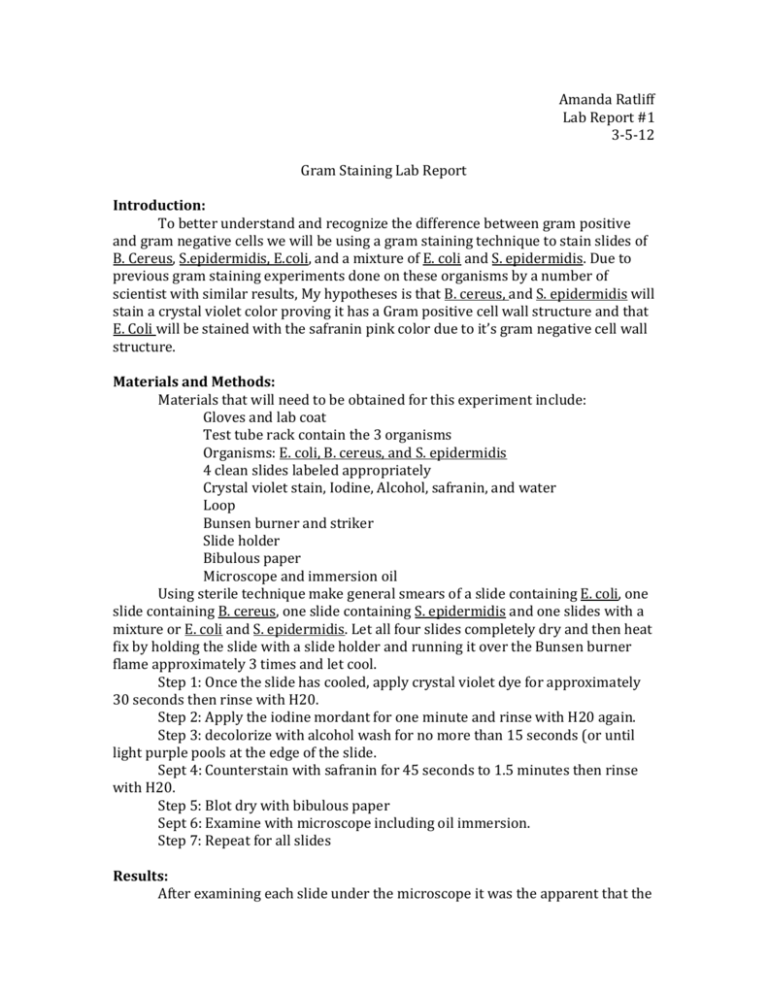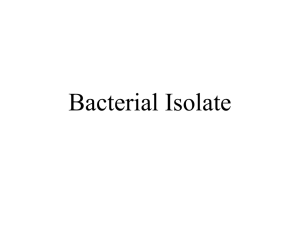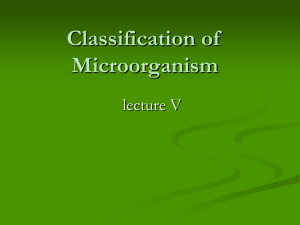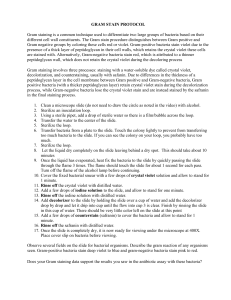gram stain lab report. micro lab
advertisement

Amanda Ratliff Lab Report #1 3-5-12 Gram Staining Lab Report Introduction: To better understand and recognize the difference between gram positive and gram negative cells we will be using a gram staining technique to stain slides of B. Cereus, S.epidermidis, E.coli, and a mixture of E. coli and S. epidermidis. Due to previous gram staining experiments done on these organisms by a number of scientist with similar results, My hypotheses is that B. cereus, and S. epidermidis will stain a crystal violet color proving it has a Gram positive cell wall structure and that E. Coli will be stained with the safranin pink color due to it’s gram negative cell wall structure. Materials and Methods: Materials that will need to be obtained for this experiment include: Gloves and lab coat Test tube rack contain the 3 organisms Organisms: E. coli, B. cereus, and S. epidermidis 4 clean slides labeled appropriately Crystal violet stain, Iodine, Alcohol, safranin, and water Loop Bunsen burner and striker Slide holder Bibulous paper Microscope and immersion oil Using sterile technique make general smears of a slide containing E. coli, one slide containing B. cereus, one slide containing S. epidermidis and one slides with a mixture or E. coli and S. epidermidis. Let all four slides completely dry and then heat fix by holding the slide with a slide holder and running it over the Bunsen burner flame approximately 3 times and let cool. Step 1: Once the slide has cooled, apply crystal violet dye for approximately 30 seconds then rinse with H20. Step 2: Apply the iodine mordant for one minute and rinse with H20 again. Step 3: decolorize with alcohol wash for no more than 15 seconds (or until light purple pools at the edge of the slide. Sept 4: Counterstain with safranin for 45 seconds to 1.5 minutes then rinse with H20. Step 5: Blot dry with bibulous paper Sept 6: Examine with microscope including oil immersion. Step 7: Repeat for all slides Results: After examining each slide under the microscope it was the apparent that the staining was successful, E. coli and B. cereus were both a deep purple color from the crystal violet stain, and S. epidermidis was a deep pink color from the counter stain safranin. And the slide with both E. coli and S. epidermidis had both pink and purple cells. Discussion: After preforming gram-staining technique on the provided organisms, it was found that this experiment matched the results of previous gram staining results. When observing E. coli under the microscope it was apparent that the deep pink tint it obtained meant it was a gram negative cell, therefore having a thin layer of peptidoglycan were the crystal violet was easily decolorized out of the cell by the alcohol and then stained by the counterstain, safranin. Resulting in a pink stained cell. When observing B. cereus it as apparent that the deep purple stain meant it was a gram negative cell, containing a thick peptidoglycan layer which the increased affinity to the stain by the mordant restricted the affect of the alcohol decolorizer. Explaining the purple stained cell. And when observing the mixture slide of E. Coli and S. epidermidis it was apparent that mixtures of gram positive and gramnegative cells were present because the slide contained some purple cells and some pink cells. Since it was already determined that E. coli was the gram negative cell we can then come to the conclusion that S. epidermidis is the gram positive cell. This was confirmed when observing the slide with only S. epidermidis on it, the slide contained only purple stained cells meaning it was also a gram positive cell structure having a thick peptidoglycan layer. Extensions: To further continue the experiment, it would be interesting to determine major sources of theses specific organisms. To know what illnesses or disease contain a gram positive or gram negative cells. References: Gram-staining procedure (Figure 3.10a) Copyright The Benjamin/Cummings Publishing Company, Inc., from Tortora, Funke, Case, Microbiology: An introduction







